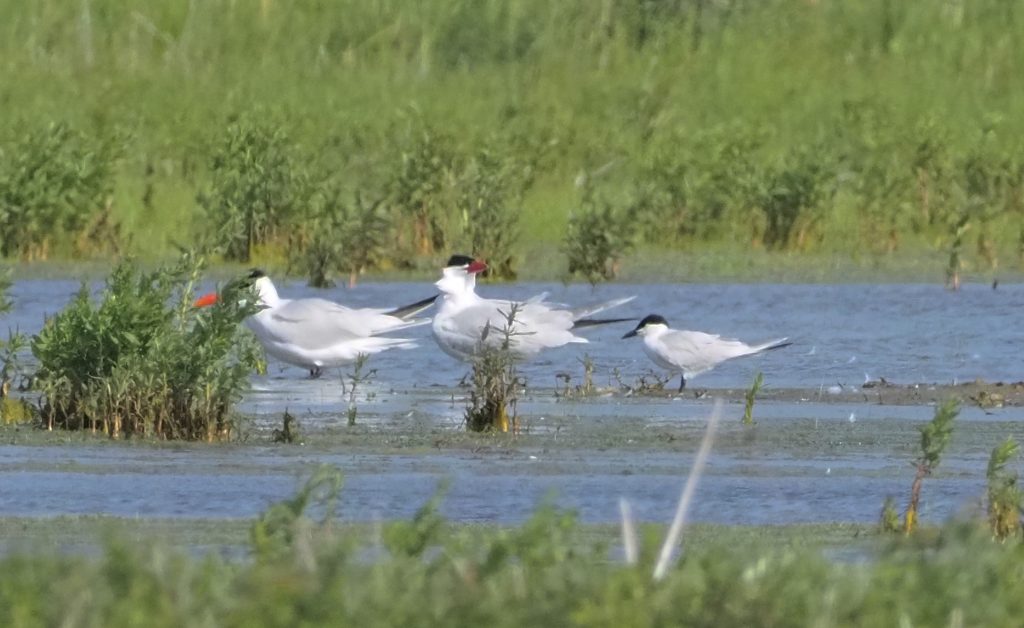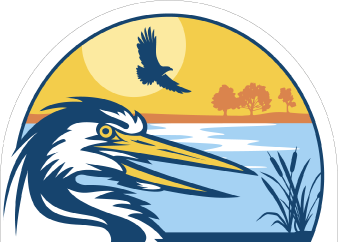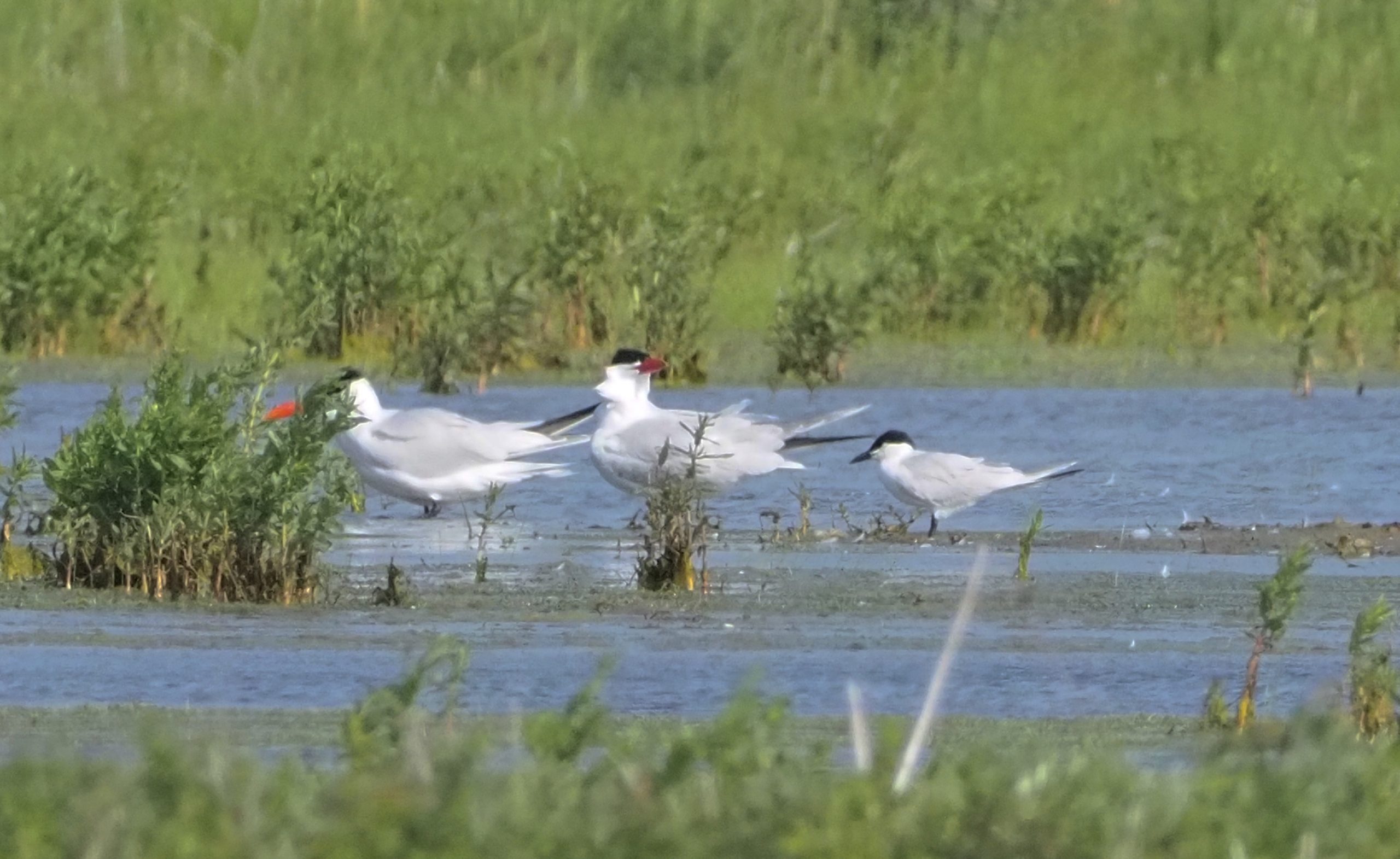
On the evening of May 23, 2020 it was reported by a Buffalo birdwatcher that he’d spotted a Gull-billed Tern, a costal worldwide bird that rarely comes inland and a bird that would provide an opportunity for many birders in the region to see for the first time, a lifer!
As an eBird lister and long time birder I’ve seen this bird many times, but seeing the tern locally would be a thrill despite it being “just” a Genesee County bird for me! Early on the morning of May 24, 2020, a birding friend got the news out via the Buffalo Ornithological Society’s One Call Hotline alert system, and the Genesee Birds List-serve that the tern had remained overnight and was showing well at Cayuga Pool!
Click here to become a member!
Click here to donate!
Earlier in the week, another rarity, a Snowy Egret, had been spotted and was still at Cayuga as well. You might be wondering “Why Cayuga Pool?” The answer is that Iroquois National Wildlife Refuge’s primary mission, the reason it was established in 1958, is to provide habitat for migratory birds.
The marsh water levels are managed by Refuge Biologist Paul Hess. When a marsh is “drawn down” it provides mudflats that are rich in invertebrate life for shorebirds and later, when water is restored, plants that are relished by migratory waterfowl and water birds. All these migratory birds need to fuel their migration to their summer breeding grounds in the boreal forests and tundra of northern Canada and the US, primarily at Alaska’s Arctic NWR. After a (hopefully) successful breeding season, the birds then use Iroquois as a stopover on their way to their winter homes.
Iroquois is one piece of the marvelous National Wildlife Refuge System, established “to administer a national network of lands and waters for the conservation, management, and restoration of the fish, wildlife, and plant resources and their habitats within the United States for the benefit of present and future generations”
Back to the tern! This year Cayuga Marsh is “drawn down” and is not only a magnet for migratory birds. It is a magnet for all people who enjoy birdwatching! On arriving, we were able to see this MEGA find (in birder-speak) and noticed it was half the size of our largest tern, the Caspian Tern. The body was white, contrasting with very light gray, long, thin wings with a darker area at the tips. On these wings it flew buoyantly and frequently foraged for insects at water level. At one time it appeared to chase a Bald Eagle! Risky!

Most of the time we watched, the tern rested on a mudflat and preened its feathers with its all black stout bill. The tern’s black crown extended all the way back to its nape. The short tail looked slightly forked when spread. What a bird! We took pictures which I’m sure are not the best ones taken that day. Several times, the tern flew over to the Cayuga sub-impoundment known as Kumpf Marsh, which is managed for shorebirds. The closer photo was taken there from Feeder Road. And of course, I contributed my sighting of this rare bird to eBird.
I hope you enjoyed hearing about the first documented Gull-billed Tern to visit the BOS region and Iroquois NWR! The birds belong to everyone, and I hope you all find an opportunity to visit this amazing Refuge.
If you’d be interested in joining any of the local bird alert systems, see below:
Buffalo Ornithological Society’s one-call phone alert system was created ten years ago and is run by Friends of Iroquois NWR, Inc. Board Member Mike Galas! Visit the BOS website if you’re interested in the One Call Hotline or for information on the Genesee Birds List-serve, which is for local Western New York bird sightings.


